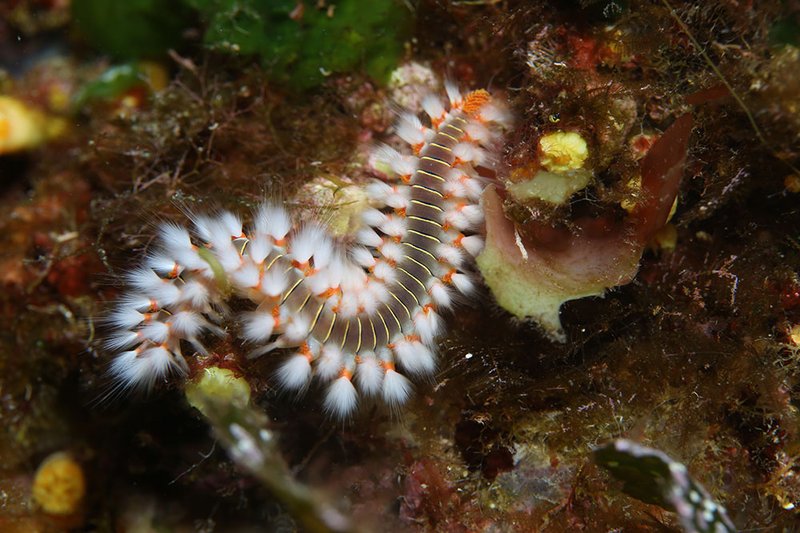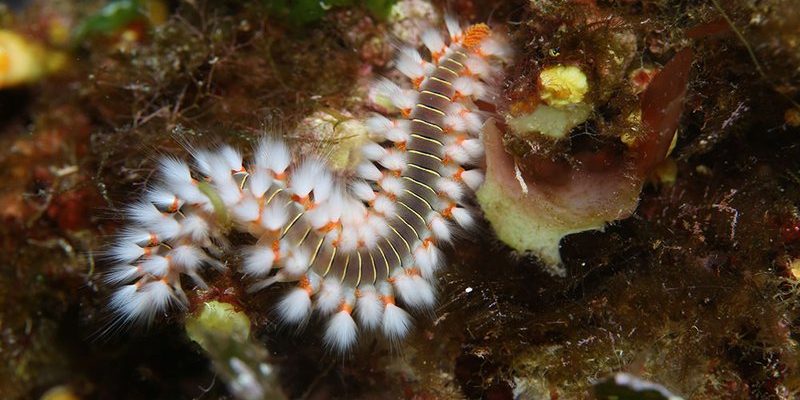
Let’s break it down. Think of bristle worms like the quirky relatives of the ocean world. While they might not be the friendliest-looking critters on the block, it turns out they’re more misunderstood than dangerous. So, pour yourself a cup of coffee, and let’s dive into the fascinating world of these marine animals and what you need to know about their stinging capabilities.
What Are Bristle Worms?
Bristle worms are marine invertebrates that belong to the class Polychaeta, which is part of the phylum Annelida. You can usually spot them in oceans worldwide, lurking in sandy or muddy environments. They’re like the little cleanup crew of the ocean, munching on organic matter and playing a vital role in the ecosystem.
These worms can vary significantly in size, from just a few inches to over a foot long. One of their most noticeable features is the bristles or chaetae that cover their bodies, giving them their name. These bristles are actually stiff, hair-like structures that help them move and can serve as a defensive mechanism. So, while they may look a bit scary, they’re essential players in marine life.
Do Bristle Worms Have Stingers?
You might be wondering if these bristle-covered creatures pack a punch when it comes to stings. The answer is: yes, but not in the way you might think. Bristle worms don’t have stingers like jellyfish or wasps. Instead, their bristles can cause irritation if you come in contact with them. They can break off and embed in your skin, causing a sensation that can be quite uncomfortable, but it’s not venomous.
When disturbed, some species can also release a substance that might cause a burning feeling. This isn’t venom, but it can feel like a sting. If you accidentally touch one, it’s best to rinse the area with seawater or fresh water to help soothe the irritation. It’s kind of like a bee sting, but without the full-blown venom attack.
Understanding the Bristles
Now let’s dive deeper into those bristles. What are they made of, and why do they matter? The bristles, or chaetae, are primarily made of a tough protein called chitin. Think of chitin as nature’s version of plastic—strong and resilient. These bristles can help the worms with movement, allowing them to burrow into the seabed or cling to rocks.
However, these chaetae can also be a problem for those who handle them without care. When they break off in your skin, they can cause localized irritation, rashes, or other reactions. When someone says, “Ouch! I got stung by a bristle worm,” they’re usually talking about the annoyance of these pesky bristles, not a venomous attack.
What Happens If You Get Stung?
If you do find yourself with some bristles stuck in your skin, don’t panic! Here’s a simple step-by-step guide to handle the situation:
- Don’t Rub It: Rubbing the area can make things worse, pushing the bristles in deeper.
- Rinse Thoroughly: Use seawater or freshwater to rinse the area gently.
- Remove Bristles: If you can see the bristles, carefully remove them with tweezers. Avoid using your fingers.
- Apply a Soothing Cream: Hydrocortisone cream or aloe can help ease irritation and inflammation.
Most reactions are mild and subside on their own, but if symptoms persist or worsen, it’s wise to consult a healthcare professional. It’s just a precaution to ensure you’re all good!
Are All Bristle Worms the Same?
Great question! There are over 10,000 species of bristle worms, and not all are created equal. While many of them share similar traits, some can be more aggressive than others. For example, fireworms, a type of bristle worm, have a reputation for being more irritating than your typical garden-variety bristle worm.
Fireworms have particularly venomous bristles that can deliver a sting. These worms can be found in warmer waters and are notorious for causing painful reactions. So, it’s always best to be cautious when exploring marine environments, especially if you’re not sure what type of bristle worm you’re dealing with.
How to Avoid Bristle Worm Encounters
If you’re planning a day at the beach or a snorkeling adventure, here are some tips to keep your encounters with bristle worms to a minimum:
- Avoid Disturbing Sand: Bristle worms often hide in the sand, so try not to dig or disturb the seabed.
- Wear Protective Gear: If you’re handling rocks or digging in the sand, consider wearing gloves.
- Be Cautious When Swimming: Take care where you put your hands when climbing over rocks or reefs.
By being mindful of your surroundings, you can enjoy the ocean and its inhabitants while minimizing unpleasant encounters with bristle worms.
In summary, bristle worms are intriguing creatures that play a crucial role in our oceans. While they can cause irritation through their bristle-covered bodies, they don’t deliver venomous stings like you might worry about. Instead, they’re more of a marine nuisance than a genuine threat. The key takeaway here is to respect their space and be careful when engaging with them.
Next time you’re at the beach and come across one of these worms, you can confidently enjoy your time while knowing what to expect. Remember, the ocean is full of wonders—most of them harmless, like our friend the bristle worm!

